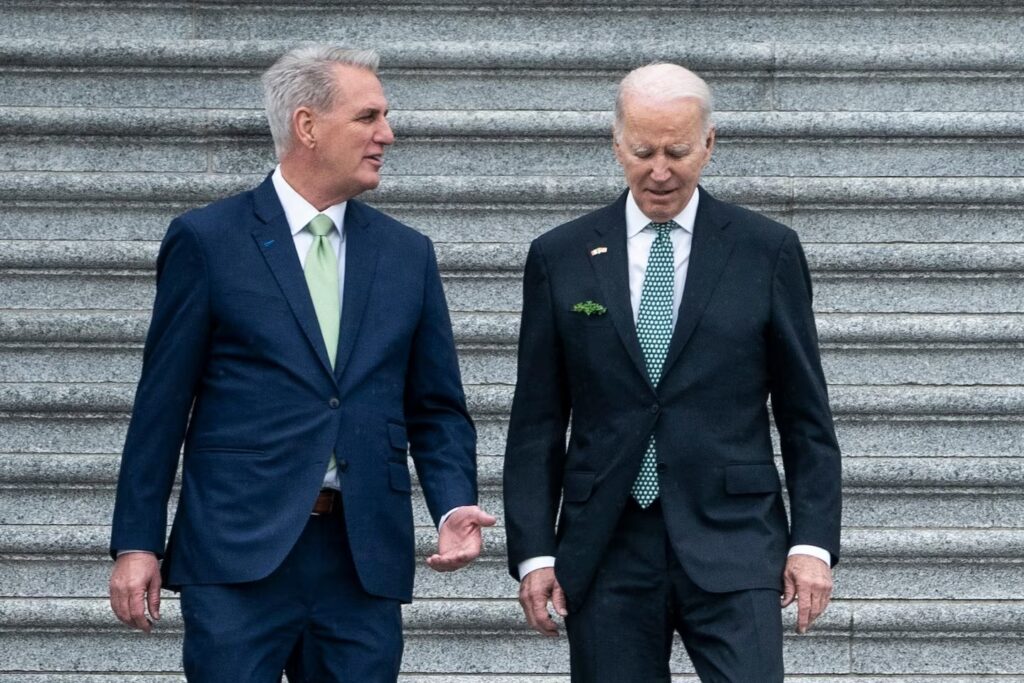Debt-Ceiling Crisis – The U.S. government is perilously approaching a point where it may become incapable of fulfilling crucial financial obligations due to the debt-ceiling brinkmanship unfolding in Congress. The risk of not meeting payment deadlines looms imminent, possibly occurring by June 1.
The U.S. government has never failed to meet its obligations on Treasury bonds. Such an occurrence possesses the capacity to disrupt the multi-trillion dollar markets that form the foundation of the global financial system.
The Securities Industry and Financial Markets Association. Also known as Sifma, has been dedicated for over ten years. Starting from the debt-ceiling crisis in 2011, to devising its backup strategy in order to prevent a highly probable and unparalleled disruption to financial markets. Here are the details of their efforts:
What happens if Congress doesn’t raise the debt limit in time?
According to Sifma, the anticipated scenario is that the Treasury will probably need to defer the repayment of a bondholder’s principal, which refers to the original sum borrowed by the government and owed to the investor upon maturity. Additionally, the Treasury might have to postpone the payment of a bond’s coupon, which is the semiannual payment owed to the investor.
Money-market funds, banks, and corporations alike utilize Treasury investments to handle their cash reserves. Numerous individual investors have acquired government bonds, particularly short-term T-bills, in recent times due to the increase in interest rates. The banking difficulties experienced in March further motivated individuals to transfer their funds into T-bills or money-market funds that include investments in them.
Get 2 Years of The Wall Street Journal Print Subscription with daily delivery 6 days a week.
Investors who withdrew funds from their bank and invested in a three-month Treasury bill during March could anticipate the return of their funds, along with accrued interest, in June. However, if an agreement is not reached by that time, they may find themselves unable to obtain their expected returns for an uncertain duration.
Regardless of the situation, Sifma predicts that the Treasury will adopt a day-to-day approach, publicly announcing its intentions to prolong the maturity date of a bond that is scheduled to expire on a preceding day
The Treasury will collaborate with Fedwire, which is the Federal Reserve’s payment system facilitating electronic transfer and settlement services for banks, companies, and the U.S. government. Their aim is to guarantee the appropriate handling of overdue bon
It is currently uncertain whether investors holding such bonds can anticipate receiving additional recompense from the government due to the delay.
What could go wrong?
Ensuring a smooth process relies predominantly on the Treasury. The government needs to collaborate with Fedwire a day before any planned payment to avoid any disruptions.
In the event that a bond reaches its maturity date without being repaid, and the Treasury fails to disclose its plan beforehand, the bond would become non-negotiable within the Fedwire system and would be assumed to have been paid. This situation poses a significant risk of billions of dollars worth of assets being frozen overnight, causing investors to question the reliability and trustworthiness of the U.S. government.
Subscribe today and get 52 weeks of The WSJ Print Edition with daily delivery to your home
Numerous analysts anticipate the Treasury to avert such a scenario, but despite careful preparation, a breach of the debt ceiling could result in unpredictable consequences. Policymakers have expressed concerns that such an occurrence could ignite unanticipated issues that propagate throughout Wall Street, leading to a complete financial crisis. SEC Chair Gary Gensler cautioned that hedge funds have heavily borrowed from the Treasury market to support their speculative gambles, thereby “posing risks to the American public.”
During the debt-ceiling turmoil in 2011, S&P lowered the credit rating of the United States, causing turbulence in financial markets. Analysts are concerned that additional credit downgrades could once again undermine trust in the U.S. government, resulting in widespread repercussions on Wall Street and potentially increasing borrowing expenses for the government and taxpayers.
How much cash does the government have on hand?
The Treasury maintains a deposit at the Federal Reserve called the Treasury General Account. Through this account, the government covers various expenses, including Social Security payments, military salaries, and interest payments on debt.
Although American taxpayers contribute to the Treasury General Account (TGA). The Treasury’s reserves are slightly lower than what many analysts had predicted for this tax season. As of May 17, the TGA stood at $68 billion, reflecting a decrease of nearly $900 billion compared to approximately one year ago.
The government has set a goal of reaching a year-end balance of $600 billion.
The Treasury will persist in making certain payments using its existing cash reserves, but its flexibility is constrained due to the inability to issue additional debt.
How does this impact companies’ daily operations?
In the debt-ceiling saga, BNY Mellon serves as a vital participant alongside Congress and the Treasury. As the oldest bank in the United States, it plays a pivotal role as the clearing bank for the tri-party repo market. This market facilitates the daily exchange of securities for cash between banks and corporations, providing the necessary funding for their operations.
That represents a significant burden to shoulder: Daily transactions in the repo market amount to over $4.8 trillion in value.
By collaborating with the entities involved in a trade, BNY Mellon will prolong the duration of bonds that have experienced maturity extensions. However, both parties in the trade will need to reach a mutual agreement, thereby introducing a more complex procedure for a market that handles approximately 7,000 transactions daily.
Is the impasse over the debt ceiling causing reverberations within the bond market?
Since Secretary Janet Yellen implemented extraordinary measures in January, the Treasury has curtailed its issuance of short-term Treasury bills. This decrease in the supply of these bonds has resulted in higher prices, leading to disrupted trading and unusual fluctuations in the interest rates associated with these securities.
Based on a survey by JPMorgan, investors anticipate a substantial rally in Treasuries, as many seek out secure assets amidst an uncertain economic outlook. This potential rally could further prolong the upward momentum that commenced during the banking sector turbulence experienced in March.

